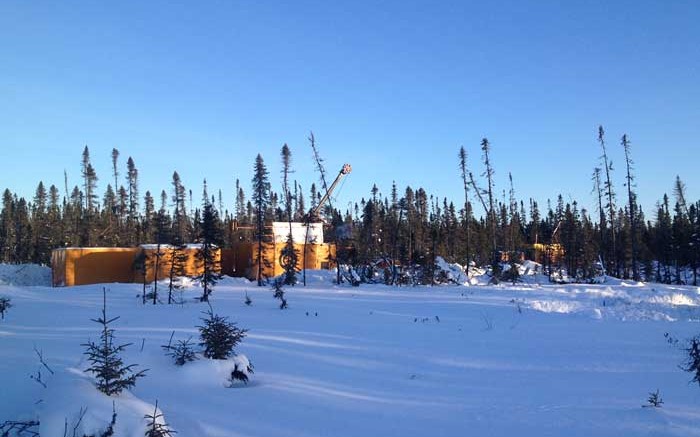VANCOUVER — Integra Gold’s (TSXV: ICG; US-OTC: KALRF) efforts to advance its Lamaque gold project in Val-d’Or, Que., to production were just rewarded with a preliminary economic assessment (PEA) predicting a mine with a 38% after-tax internal rate of return (IRR).
The PEA is based on a resource that does not include the 30,000 metres of drilling completed at Lamaque in late 2013, which expanded several zones along strike and to depth.
Integra’s project is named for the historic mine that sits next door. The Lamaque mine produced 4.4 million oz. gold over many decades. Unlike the original Lamaque, where mineralization occurred in one large plug, Integra’s Lamaque hosts a series of mineralized plugs.
Integra has outlined resources in four of those plugs: Fortune, Triangle, the No. 4 Plug and Parallel. The company has also hit mineralization on four others, known as the No. 6 Vein, Sixteen, the No. 5 Plug and the No. 3 Vein.
To access all of these zones Integra envisions an underground mine at Lamaque that uses room-and-pillar and long-hole mining methods, with two declines. The North ramp would provide access to the Parallel and Fortune zones. If drilling defines sufficient resources at the No. 5 Plug and No. 3 Vein, the North ramp could also provide access to those areas. Two kilometres away, the South ramp would drive into the Triangle zone and the No. 4 Plug.
Material from both declines would be moved off-site for toll milling. Toll milling makes sense in the Val-d’Or region, as there are six milling facilities within 25 km of the Lamaque property, including Agnico Eagle Mines’ (TSX: AEM; NYSE: AEM) Goldex mine, which has spare mill capacity.
Mines are cheaper to build when mills are not needed, which is why the price tag to get Lamaque into production sits at just $69.2 million. The full cost is $106.6 million, but the cost is also offset by gold revenues from pre-production ore: Integra expects to recover 28,000 oz. gold from mineralized material mined during development, and the $37.4 million earned from those ounces will be put back into the mine.
Integra has another potential cost-cutting tool at its disposal: delaying the development of the South ramp. A delay of 12 to 18 months would reduce upfront capital requirements by $20 million. When it is built, cash flow from operations out of the North ramp could finance development of the South ramp.
The operation could produce 460,500 tonnes of ore annually bearing an average grade of 8.24 grams gold per tonne. An average 92.1% recovery rate means annual production should average 112,400 oz.
As planned, the mine could produce each gold ounce for $805, including sustaining costs. Using a US$1,275 per oz. gold price and a 5% discount rate, the operation bears an after-tax net present value of $88.5 million and generates a 38% after-tax IRR. The mine could repay its capital costs in less than two years.
At planned rates the project’s resources — which stand at 1.5 million indicated tonnes grading 10.2 grams gold and 488,500 inferred tonnes averaging 15.1 grams gold — are enough to sustain the operation for just over four years. However, based on the long-term success at the neighbouring Lamaque and Sigma mines, Integra foresees a much longer mine life.
“These mines produced over 9 million oz. gold over 50- and 60-year mine lives, yet seldom had more than three years in reserves, and often less than one,” said Integra president and CEO Stephen de Jong.
Indeed, the 30,000 metres of drilling Integra completed in late 2013 already extended the Triangle zone by 175 metres along strike and 1,000 vertical metres, compared to the 620-metre depth extent considered in the PEA. Work continues at Triangle with four drills on-site.
Similarly, at the Parallel zone Integra’s 2013 drilling program confirmed the continuity of high-grade mineralization in untested areas, which should add tonnage and increase the confidence in existing resource tonnes. The better results from Parallel in late 2013 include 2 metres grading 95.86 grams gold, 1 metre of 71.47 grams gold and 1 metre of 91.03 grams gold.
The drill results came out in mid-February, and impressed investors boosted Integra’s share price by 10¢ to the low-30¢ level, where it has stayed since. News of the PEA added just half a cent to the company’s share price, which closed at 31.5¢. Integra has 135 million shares outstanding.


Be the first to comment on "Integra eyes low-cost underground mine at Lamaque"